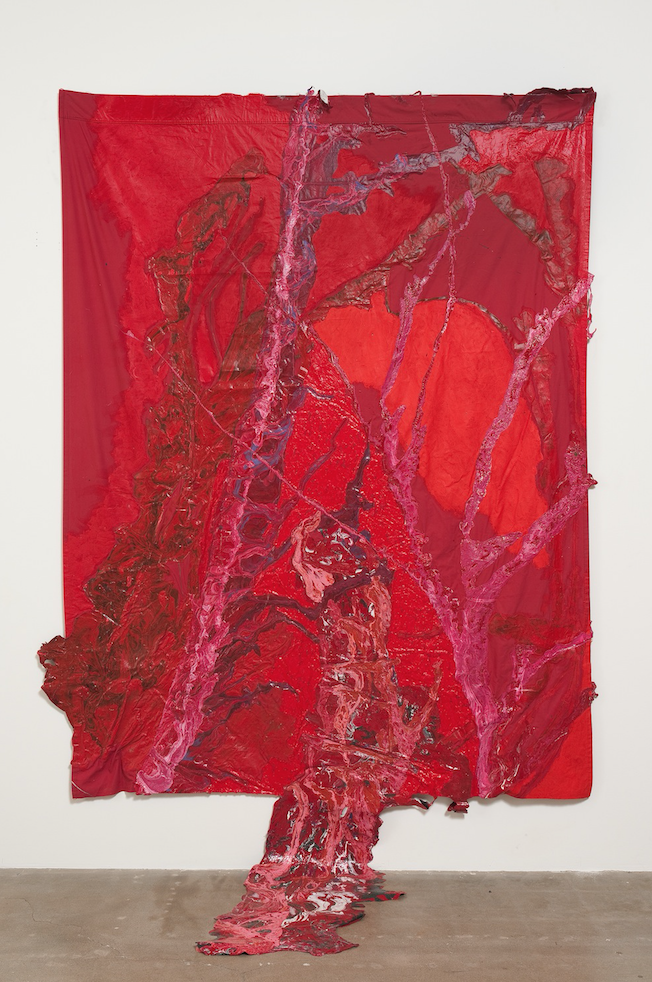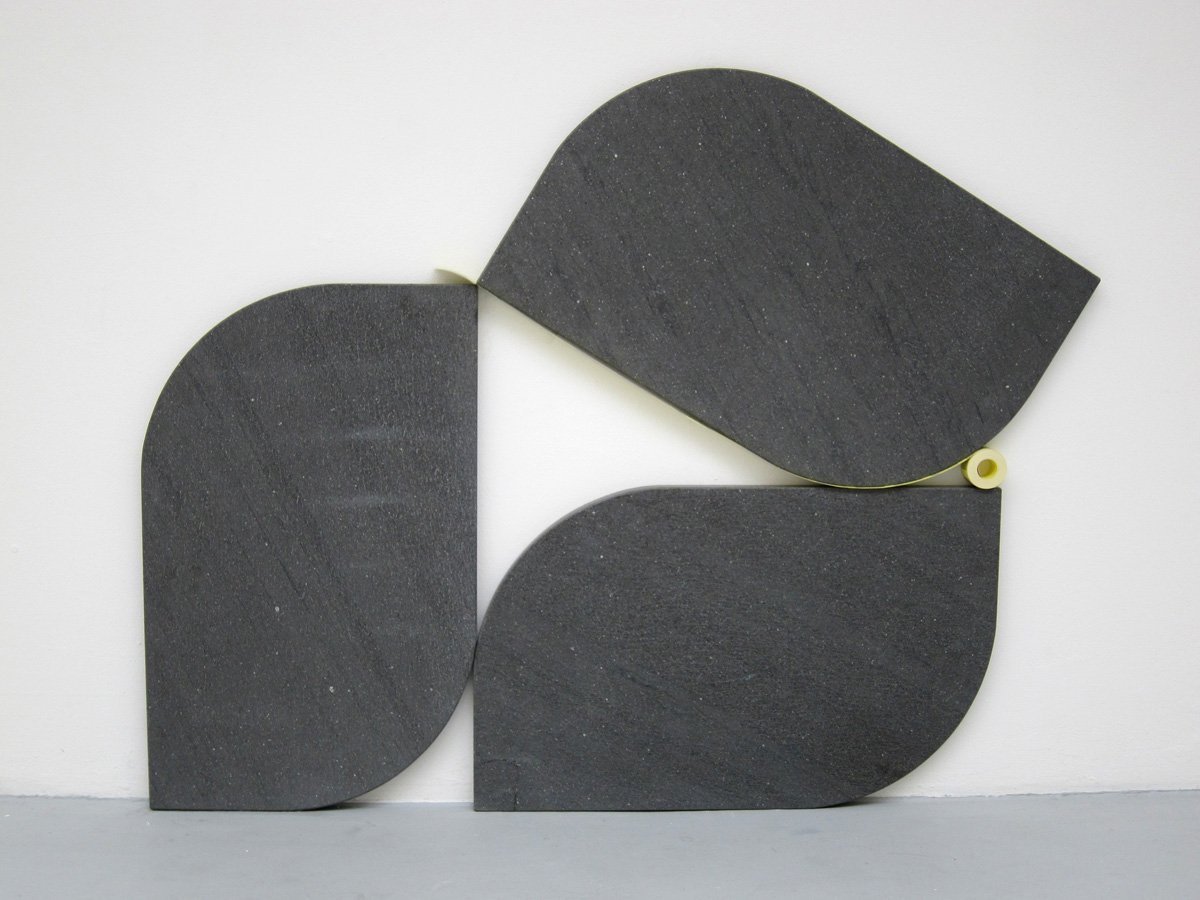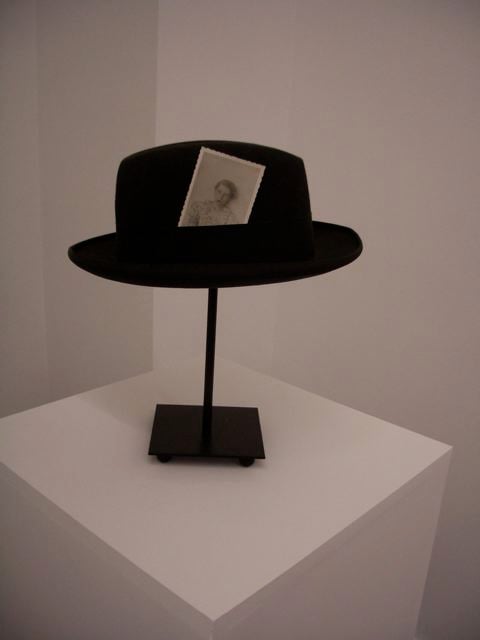Versions
2012 - Film & Video (Film & Video)
6:00 minutes
Oliver Laric
Oliver Laric’s video Versions is part of an ongoing body of work that has continued to evolve and mutate over time. Comprised of several video and sculptural works that share the same title, the Versions series reflects Laric’s key concerns: the mutability of images and objects and the negotiation between original and copy. In this video, we see several 3D renders of recognizable objects and places, while an ubiquitous feminized robotic voice that evokes the domestic familiarity of voice recognition tools such as Siri and Alexa, speaks of issues relating to identity, language, and translation. Formally, these concepts are reflected through strategies of doubling, mirroring, translating, transferring and mimicking: images of ancient Greek busts are reproduced in postal stamps for Mali and Peru; two popular Disney characters dancing side by side reveal how the same motion was used for both of them; and iconic basketball moments are immortalized both through photographs and interpretations in Manga comics. In addition to the formal strategies, there’s an array of historical references that bring the same concerns to the fore, including a piece by piece architectural render of the Ise Shrine, which is demolished and rebuilt every 20 years as part of Shinto belief system of death, renewal, and the impermanence of all things. Another key reference that appears in many of Laric’s videos and sculptural works is the bust of Chinese military strategist Sun Tzu, Laric’s interest centered around the proliferation of adaptations of his ancient military treatise Art of War, which have been disseminated globally.
Oliver Laric is a Berlin-based, Austrian multimedia artist whose work is centered around issues of authorship, originality, and ownership—with a specific interest in visual culture in the digital age. His work and broad research addresses an ongoing history of the mutability of objects and images. From ideas of copyright to examples of iconoclasm (the destruction of religious iconography), Laric’s focus is on how objects and images are continually re-represented, appropriated, remixed, augmented and modified. Several of Laric’s work evolve over time, at times relying on the voracious contribution of online communities. From 2006–2012, for example, Laric was part of the project VVORK, an art blog as exhibition space, which gained a large following and led to the group working as a curatorial collective. He has also collaborated with a range of museums to make 3D scans of sculptures available and free to download online. Even his own sculptural practice is often based on versions of classical and neoclassical sculptures, which he then reinterprets. His interest in reinscribing or opening up material, however, is not in the new or hybrid objects that result, but rather the moment of transfer, the metamorphosis of objects into other objects or images, and the endless potential of mutability. That is what Laric tries to capture.
Colors:
Related works featuring themes of: » Appropriation Art, » Art That Plays With Scale, » Austria, » Collecting and Modes of Display, » Austrian

© » KADIST
Rivane Neuenschwander
2007Mapa-Mundi BR (postal) is a set of wooden shelves holding postcards that depict locations in Brazil named for foreign countries and cities...

© » KADIST
Allen Ruppersberg
1970Untitled (City Limits) is a series of five black-and-white photographs of road signs, specifically the signs demarcating city limits of several small towns in California...

© » KADIST
Charles Gaines
1980To make his series Shadows (1980), Gaines subjected 20 potted plants to a uniform procedure...

© » KADIST
Bruce Conner
2008Unlike many of his earlier films which often present poignant critiques of mass media and its deleterious effects on American culture, EASTER MORNING , Conner’s final video work before his death in 2008, constitutes a far more meditative filmic essay in which a limited amount of images turn into compelling, almost hypnotic visual experience...

© » KADIST
Agnieszka Kurant
2018Agnieszka Kurant’s Placebo VIII brings together a series of imaginary pharmaceuticals invented within the fictional narratives of literature and film...

© » KADIST
Daniel Joseph Martinez
1978For I use to eat lemon meringue pie till I overloaded on my pancreas with sugar and passed out; It seemed to be a natural response to a society of abundance (1978), also known as the Bodybuilder series, Martinez asked male bodybuilding competitors to pose in whatever position felt “most natural.” They are obviously trained in presenting their ambitiously carved physiques, but their facial expressions seem comparatively unstudied...

© » KADIST
Douglas Gordon
2002Blind Spencer is part of the series “Blind Stars” including hundreds of works in which the artist cut out the eyes of Hollywood stars, in a symbolically violent manner...

© » KADIST
Rodney McMillian
2013In his evocative Landscape Paintings, McMillian uses second-hand bedsheets, sourced from thrift shops, as his starting point...

© » KADIST
Mateo Lopez
2012With Roca Carbon ( Charcoal Rock , 2012) and Roca Grafito ( Graphite Rock , 2012), López plays with our relationship to inert and unremarkable objects such as rocks...

© » KADIST
Agnieszka Kurant
2022For Sentimentite Agnieszka Kurant collaborated with Justin Lane, CEO and Co-Founder of CulturePulse, to gather global sentiment data that has been harvested from millions of Twitter and Reddit posts related to 100 seismic events in recent history...

© » KADIST
Choi Jeong-Hwa
2008The application of bright colors and kitsch materials in Flower Tree manifests a playful comment on the influence of popular culture and urban lifestyle...

© » KADIST
Gabriel Kuri
2010Gabriel Kuri has created a series of works in which he juxtaposes perennial and ephemeral materials...

© » KADIST
Robert Therrien
1985In No Title (Blue Chapel) Therrien has reduced the image of a chapel to a polygon...

© » KADIST
Hans-Peter Feldmann
The types of objects Feldmann is interested in collecting into serial photographic grids or artist’s books are often also found in three dimensional installations...

© » KADIST
Wimo Ambala Bayang
2011Composed of four images, the series Sleeping Elephant in the Axis of Yogyakarta (2011) explores the artist’s observation of how Javanese mythology and cosmology have marked the geography of Yogyakarta, the cultural centre of Indonesia...





